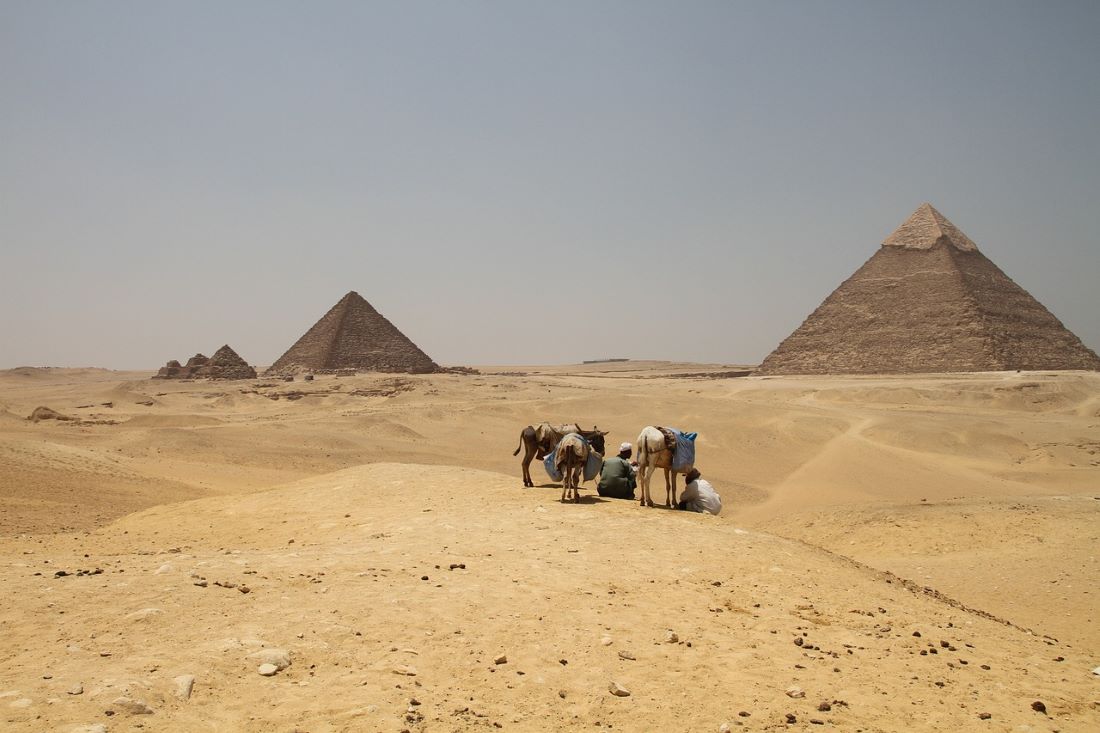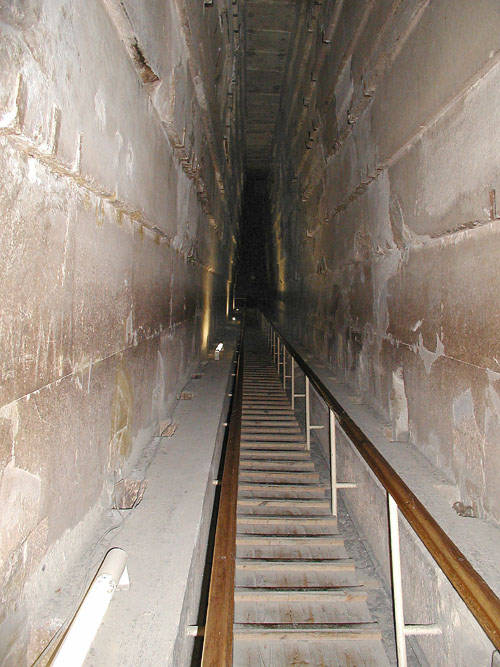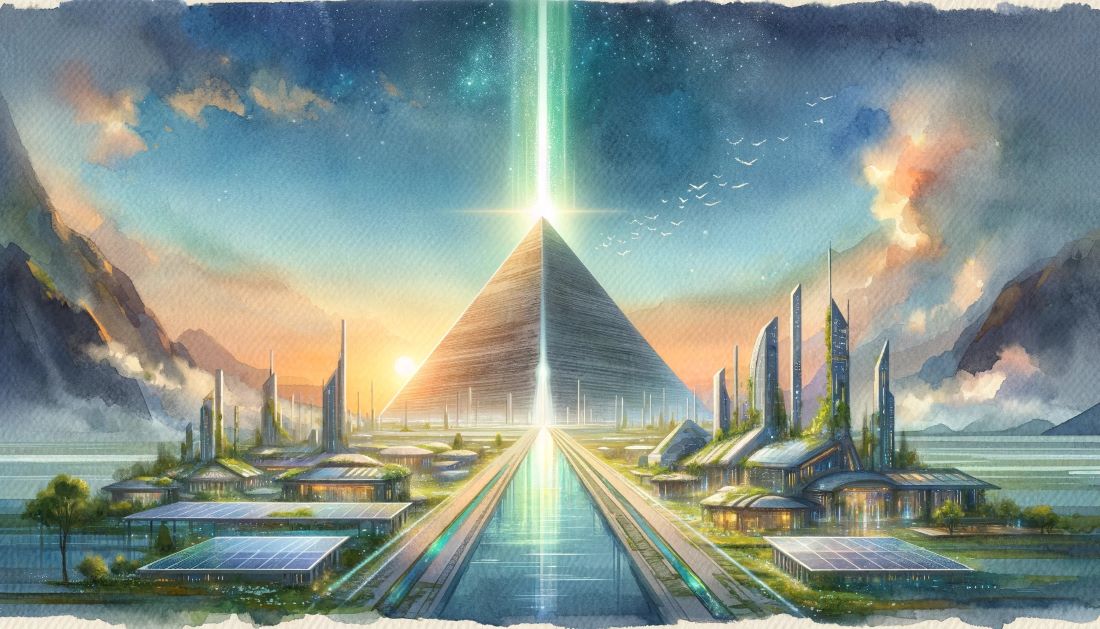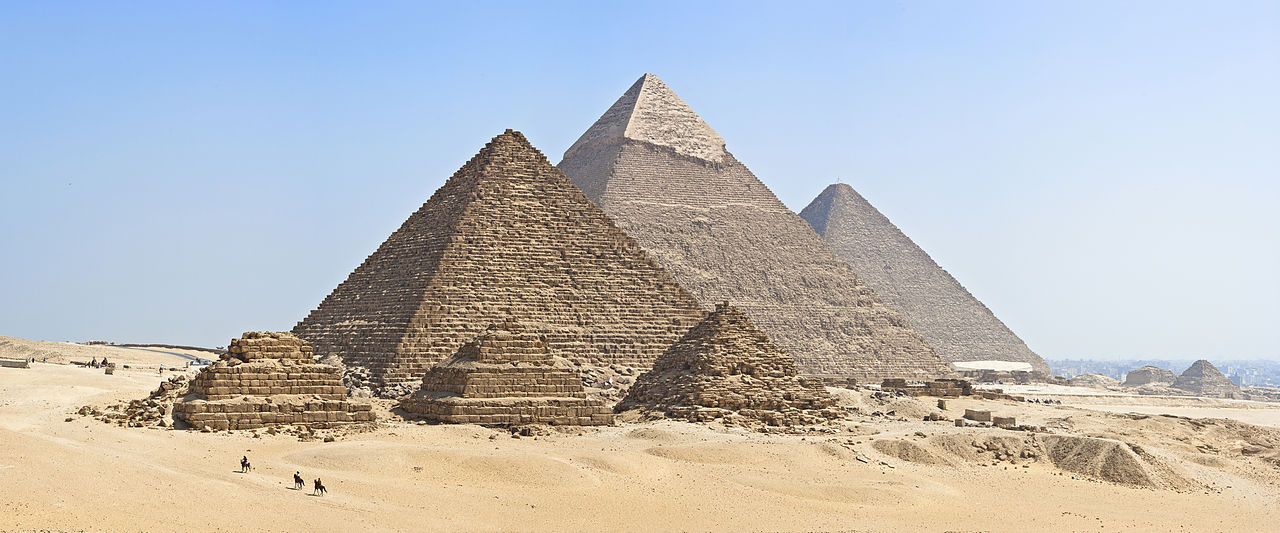The Pyramids of Egypt are an eternal enigma that captivates the attention of both scientists and casual visitors alike. They stand as the sole surviving wonder of the ancient world, a testament to human ingenuity and mystery spanning millennia. Despite the passage of time, the origin of these magnificent structures remains the subject of numerous theories, each proposing a different method of construction and purpose. This enduring curiosity not only highlights our fascination with ancient civilizations but also underscores the pyramids’ significance in our quest to understand human history and achievement. As we continue to explore and study, the Pyramids of Egypt remain a keyword in unlocking the past, offering insights that bridge the gap between ancient and modern worlds
The Geography of Egypt
Egypt, the cradle of civilization, stands resplendent in the northeastern corner of Africa. Encapsulated by the Mediterranean Sea in the north, the Sinai Peninsula acts as a land bridge to the western part of Asia. Egypt’s heart is the fertile Nile Valley, a lush strip stretching approximately 1,000 km from the Aswan High Dam to the outskirts of Cairo. This striking contrast of fertile land and surrounding arid desert creates a unique biotope, shaping the way of life and the monumental architecture Egypt is renowned for.

Most of Egypt is a vast desert plateau, deeply dissected by the Nile River and its tributaries. The Nile’s annual flood brought life to the desert, depositing fertile silt that enabled agriculture and supported thriving civilizations. It was near this river, under the golden sands of Giza, that the grand pyramids took their form, standing as an eternal testament to a civilization’s grandeur.
Egypt’s Earliest Dynasties
The cradle of ancient Egyptian civilization is believed to have been established around 3150 BC with the political unification of Upper and Lower Egypt under the first Pharaoh, Narmer. From this point, the era of the Early Dynastic Period began, laying the foundation for some of Egypt’s most enduring architectural structures. The construction of tombs and mastabas indicated the reverence for the afterlife.

It was during the era of the Old Kingdom (2686-2181 BC) that Egypt saw the birth of its most iconic structures – the pyramids. This era, also known as the ‘Age of the Pyramids,’ was marked by strong, centralized rule, significant architectural achievements, and the development of sophisticated arts and literature.
Builders of the Great Pyramids
The construction of the three most famous pyramids at Giza – the Great Pyramid of Khufu (Cheops), the Pyramid of Khafre (Chephren), and the Pyramid of Menkaure (Mycerinus) – was undertaken during the Fourth Dynasty of the Old Kingdom. Pharaoh Khufu, the second ruler of this dynasty, built the largest pyramid known as the Great Pyramid around 2580–2560 BC. Following him, his son Khafre constructed the second pyramid and the iconic Sphinx, and Khafre’s son Menkaure built the third and smallest pyramid.
These grand monuments were not merely extravagant tombs but also served as complex funerary structures, facilitating the pharaoh’s transition to the afterlife. They reflect the ancient Egyptians’ beliefs about death and their quest for immortality.
Main Characteristics of the Pyramids
The pyramids are geometric marvels, demonstrating advanced engineering and mathematical skills. The Great Pyramid of Khufu, the largest of the three at Giza, was originally 146.5 meters (480.6 feet) tall and covers an area of 5.5 hectares. Over time, the external casing has been stripped away, reducing its current height to 138.8 meters (455.2 feet). Its base is almost a perfect square, each side measuring approximately 230.4 meters (755.9 feet).

The interior of the pyramids consists of a complex system of chambers and passageways. The Great Pyramid contains three known chambers: the lowest was cut into the bedrock upon which the pyramid was built, while the upper two, known as the Queen’s Chamber and the King’s Chamber, are higher up within the pyramid structure.
Theories on Pyramid Construction
There are numerous theories about how the pyramids were built, many of which have been proposed by noted architects, engineers, and Egyptologists. The Greek historian Herodotus proposed that the pyramids were constructed using a series of causeways and ramps to lift the blocks into place.
In 2007, French architect Jean-Pierre Houdin suggested a unique theory that the Great Pyramid was built using an internal spiral ramp. Meanwhile, Mark Lehner and other Egyptologists propose that a vast labor force was assembled from across Egypt, supporting the conventional understanding that the pyramid was built by thousands of skilled workers over 20 years.
Alternative History and The Pyramids
In the landscape of alternative history, few structures have captivated and puzzled theorists as much as the pyramids of Egypt. Some propose far older origins and purposes far beyond the conventional understanding of these structures as pharaonic tombs.
Erich von Däniken, a notable proponent of the ancient astronaut theory, presented his controversial views in his 1968 book, ‘Chariots of the Gods.’ He suggested that the pyramids and other ancient monuments were the handiwork of extraterrestrial beings, possessing knowledge and technology far superior to that of humans of the time. Von Däniken posits no specific timeframe for this supposed intervention, but the implication is that it would have been many thousands of years ago.

Another intriguing theory is the Orion Correlation Theory, presented by Robert Bauval and Adrian Gilbert in their 1994 book ‘The Orion Mystery.’ They argue that the three Great Pyramids of Giza are a terrestrial map of the three stars of Orion’s belt, and this correlation was intentionally created in 10,500 BC. This date, more than 6,000 years earlier than the traditional dating of the pyramids, points to an advanced, possibly lost civilization.
At the same period, according to some theorists, the Sphinx was being carved. This idea was first proposed by John Anthony West and later supported by geologist Robert Schoch. After studying the erosion patterns on the Sphinx and its enclosure, they argued that these patterns were the result of water (likely heavy rainfall) rather than wind and sand. Considering that the last period of significant rainfall in the Giza Plateau occurred around the end of the last Ice Age, about 10,000-9,000 BC, the Sphinx – and possibly the pyramids – might be remnants of a previously unknown ancient civilization.
These alternative theories, although not widely accepted by mainstream archaeology, continue to stoke our fascination and curiosity about the enigmatic pyramids, keeping the flame of exploration and discovery burning brightly. The pyramids, stoic and resolute, continue to guard their secrets, waiting for the day when their truths are finally unearthed.
Historical Challenge: Can You Conquer the Past?
Answer more than 18 questions correctly, and you will win a copy of History Chronicles Magazine Vol 1! Take our interactive history quiz now and put your knowledge to the test!

